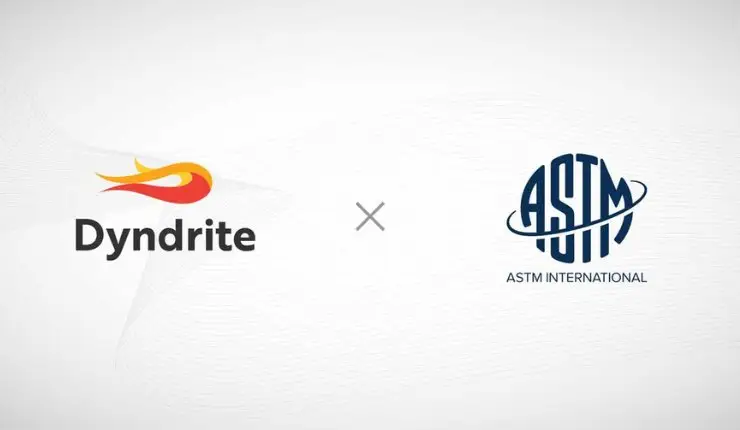Dyndrite partners with ASTM in collaborative effort to ensure manufacturing consistency for additive technology.

Dyndrite has stated that it is now a member of the ASTM International Consortium for Materials Data and Standardisation (CMDS) initiative, which is being managed by the ASTM Additive Manufacturing Center of Excellence (AM CoE).
Dyndrite has teamed up with industry partners who are responsible for establishing a set of standards for generating data on AM materials. Together, they will work to create and oversee reliable and trustworthy "reference" datasets. This collaborative effort, according to ASTM, seeks to speed up the process of qualifying materials for use in AM and encourage wider adoption of this emerging technology.
The group of organizations in this partnership consists of various entities, such as AddUp, Auburn University, Boeing, Desktop Metal, EOS, Fraunhofer IAPT, GE Additive, GKN Additive, and many more.
According to Stephen Anderson, who is the Head of Strategic Relationships at Dyndrite, "standardisation" is an incredibly important step in making industrial AM more widely adopted and growing in popularity. No matter who we talk to, our clients and partners all agree that it is crucial to speed up the sharing of materials data, so that new opportunities in AM can be discovered and so that the industry can grow. This represents a major turning point, which will allow us to fully utilise the capabilities of metal 3D printing.
Richard Huff, who is in charge of Industry Consortia and Partnerships at ASTM, expressed satisfaction over Dyndrite entering into the CMDS initiative and laying emphasis on the importance of standardizing data workflows to produce top-quality material data. He is thrilled to be incorporating Dyndrite's solutions into the scheme to ensure uniform compliance with the specifications and boost the effectiveness of CMDS data creation efforts.
Dyndrite has announced that it will launch instructions on how to create standardised designs-of-experiments (DoE) using ASTM data standards with the help of its technology. Dyndrite added that its instructions will be compatible with all leading Original Equipment Manufacturer (OEM) file formats. Additionally, Dyndrite stated that members of ASTM can either use the given specifications or develop their own as per their requirements.
The cookbooks offer a standard recipe to create building files, investigate scanning methods, control scanning speed and layer thickness diversity, and calculate laser loads.
Steve Walton, the Head of Product at Dyndrite, expressed enthusiasm about their partnership with the ASTM Consortium for Materials Data and Standardisation. He is looking forward to collaborating with their data team. Dyndrite has developed tools that guarantee quality and traceability throughout the production process of Additive Manufacturing components. As the metal AM sector aims to build up fundamental material data using the Common Data Model, Dyndrite's tools will play a fundamental role in ensuring its success.
The work we do facilitates the exchange of essential information on material properties and origins, which is essential for accurately characterizing the correlation between the production process, structure and properties of metals. It's important to have a good understanding and be able to explain this concept well, because doing so will lead to the wider use of metal AM in various industrial applications.
Dyndrite just revealed its initial AM implementation for end-users known as Dyndrite Materials and Process Development for LPBF. The 3D application that uses GPU was created with the aim of assisting materials and process engineers in the development of fresh metal alloys and parts for 3D metal printing that involves lasers.
According to the company, this software makes the most of Dyndrite's Accelerated Computation Engine (ACE). They claim that ACE can do things like identify and improve challenging geometric features in three dimensions, such as domes, cantilevers, and thin walls, through 3D geometric queries. It can also increase printing speeds by working with large multiple layer heights and print rates.
Do you want to talk about this topic? Come and participate in the discussion on the TCT Additive Manufacturing Network.
Receive a costless print membership to TCT Magazine.
Participate in the TCT 3Sixty event, which is the ultimate and powerful platform in the UK for showcasing 3D printing and additive manufacturing.

















































